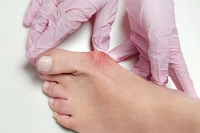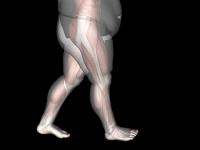Patients who have corns on their feet are often aware of the discomfort they may cause. A corn is generally caused by excessive friction that may come from the shoes and socks that are worn. There are two types of corns that can develop on the feet. Hard corns can develop on top of the toes, or on the bottom of the feet. The center of the corn can be removed, and may take several weeks to heal. If the corn forms between the toes, it is identified as a soft corn, and can cause severe pain while walking. It may be prevented by wearing shoes that have adequate room for the toes to move freely in. If you notice you have either type of corn on your feet, it is advised that you speak with a podiatrist who can begin effective treatment as quickly as possible.
If you have any concerns regarding your Feet, contact Brent Harwood, DPM of Southeast Podiatry. Our doctor will treat your foot care needs.
Corns: What Are They? and How Do You Get Rid of Them?
Corns can be described as areas of the skin that have thickened to the point of becoming painful or irritating. They are often layers and layers of the skin that have become dry and rough, and are normally smaller than calluses.
Ways to Prevent Corns
There are many ways to get rid of painful corns such as wearing:
- Well-fitting socks
- Comfortable shoes that are not tight around your foot
- Shoes that offer support
Treating Corns
Treatment of corns involves removing the dead skin that has built up in the specific area of the foot. Consult with Our doctor to determine the best treatment option for your case of corns.
If you have any questions please feel free to contact one of our offices located in Fairhope, Brewton, and Atmore, AL . We offer the newest diagnostic and treatment technologies for all your foot care needs.
Read more about Corns: What Are They, and How Do You Get Rid of Them








